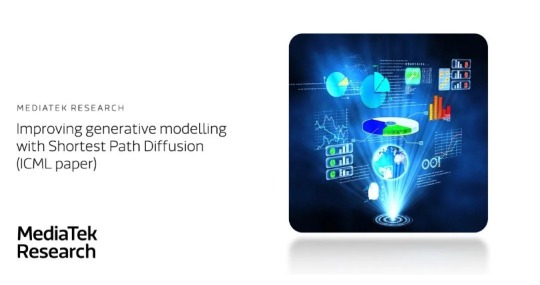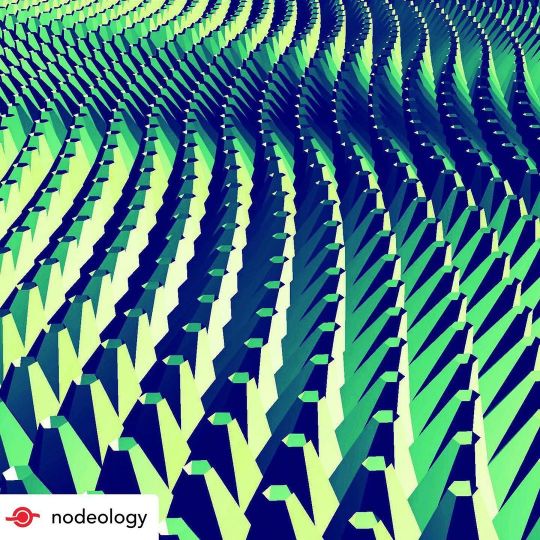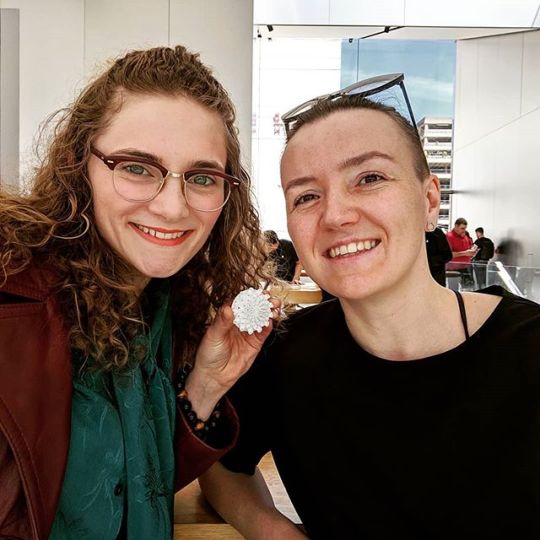#GenerativeModel
Explore tagged Tumblr posts
Text
#GAN#GenerativeAdversarialNetworks#YapayZeka#DerinÖğrenme#MakineÖğrenimi#SinirAğları#GenerativeModel#Discriminator#Generator#VeriÜretimi#YapayVeri#GörüntüÜretimi#MetinÜretimi#AdversarialÖğrenme#LatentUzay#VeriSentezi#VeriArtırma#GANMimarisi#DenetimsizÖğrenme#StilTransferi#VeriOluşturma#Deepfake#AISanat#VideoÜretimi#ZayıfGözetimliÖğrenme#ModelEğitimi#ZayıfÖrnekleme#VeriAugmentasyonu#KapsayıcıÖğrenme#YapayZekaAraştırması
0 notes
Text
Generative vs Discriminative: Understanding Machine Learning Models
Generative and discriminative models are two fundamental approaches in machine learning. Generative models learn to generate data similar to the training data, while discriminative models focus on distinguishing between classes. Understanding these differences helps in choosing the right model for specific tasks.
At Kanerika, we help businesses leverage the best machine learning models to drive innovation and enhance operational efficiency.

0 notes
Text
Vision Language Models: Learning From Text & Images Together

Vision language models are models that can learn from both text and images at the same time to perform a variety of tasks, such as labeling photos and answering visual questions. The primary components of visual language models are covered in this post: get a general idea, understand how they operate, choose the best model, utilize them for inference, and quickly adjust them using the recently available try version!
What is a Vision Language Model?
Multimodal models that are able to learn from both text and images are sometimes referred to as vision language models. They are a class of generative models that produce text outputs from inputs that include images and text. Large vision language models can deal with a variety of picture types, such as papers and web pages, and they have good zero-shot capabilities and good generalization.
Among the use cases are image captioning, document comprehension, visual question answering, image recognition through instructions, and image chat. Spatial features in an image can also be captured by some vision language models. When asked to detect or segment a specific subject, these models can produce segmentation masks or bounding boxes. They can also localize various items or respond to queries regarding their absolute or relative positions. The current collection of huge vision language models varies greatly in terms of their training data, picture encoding methods, and, consequently, their capabilities.Image credit to Hugging face
An Overview of Vision Language Models That Are Open Source
The Hugging Face Hub has a large number of open vision language models. The table below lists a few of the most well-known.
Base models and chat-tuned models are available for use in conversational mode.
“Grounding” is a characteristic of several of these models that lessens model hallucinations.
Unless otherwise indicated, all models are trained on English.
Vision Language Model
Finding the right Vision Language Model
The best model for your use case can be chosen in a variety of ways.
Vision Arena is a leaderboard that is updated constantly and is entirely dependent on anonymous voting of model results. Users input a prompt and a picture in this arena, and outputs from two distinct models are anonymously sampled before the user selects their favorite output. In this manner, human preferences alone are used to create the leaderboard.
Another leaderboard that ranks different vision language models based on similar parameters and average scores is the Open VLM Leaderboard. Additionally, you can filter models based on their sizes, open-source or proprietary licenses, and rankings for other criteria.
The Open VLM Leaderboard is powered by the VLMEvalKit toolbox, which is used to execute benchmarks on visual language models. LMMS-Eval is an additional evaluation suite that offers a standard command line interface for evaluating Hugging Face models of your choosing using datasets stored on the Hugging Face Hub, such as the ones shown below:
accelerate launch –num_processes=8 -m lmms_eval –model llava –model_args pretrained=”liuhaotian/llava-v1.5-7b” –tasks mme,mmbench_en –batch_size 1 –log_samples –log_samples_suffix llava_v1.5_mme_mmbenchen –output_path ./logs/
The Open VLM Leaderbard and the Vision Arena are both restricted to the models that are provided to them; new models must be added through updates. You can search the Hub for models under the task image-text-to-text if you’d like to locate more models.
The leaderboards may present you with a variety of benchmarks to assess vision language models. We’ll examine some of them.
MMMU
The most thorough benchmark to assess vision language models is A Massive Multi-discipline Multimodal Understanding and Reasoning Benchmark for Expert AGI (MMMU). It includes 11.5K multimodal tasks that call for college-level topic knowledge and critical thinking in a variety of fields, including engineering and the arts.
MMBench
3000 single-choice questions covering 20 distinct skills, such as object localization and OCR, make up the MMBench assessment benchmark. The study also presents Circular Eval, an assessment method in which the model is supposed to provide the correct response each time the question’s answer options are jumbled in various combinations. Other more specialized benchmarks are available in other disciplines, such as OCRBench document comprehension, ScienceQA science question answering, AI2D diagram understanding, and MathVista visual mathematical reasoning.
Technical Details
A vision language model can be pretrained in a number of ways. Unifying the text and image representation and feeding it to a text decoder for generation is the key trick. An image encoder, an embedding projector often a dense neural network to align picture and word representations, and a text decoder are frequently stacked in the most popular and widely used models. Regarding the training phases, many models have been used various methodologies.
In contrast to LLaVA-like pre-training, the creators of KOSMOS-2 decided to fully train the model end-to-end, which is computationally costly. To align the model, the authors then fine-tuned language-only instruction. Another example is the Fuyu-8B, which lacks even an image encoder. Rather, the sequence passes via an auto-regressive decoder after picture patches are supplied straight into a projection layer. Pre-training a vision language model is usually not necessary because you can either utilize an existing model or modify it for your particular use case.
What Are Vision Language Models?
A vision-language model is a hybrid of natural language and vision models. By consuming visuals and accompanying written descriptions, it learns to link the information from the two modalities. The vision component of the model pulls spatial elements from the photographs, while the language model encodes information from the text.
Detected objects, image layout, and text embeddings are mapped between modalities.For example, the model will learn to associate a term from the text descriptions with a bird in the picture.
In this way, the model learns to understand images and translate them into text, which is Natural Language Processing, and vice versa.
VLM instruction
To create VLMs, zero-shot learning and pre-training foundation models are required. Transfer learning techniques such as knowledge distillation can be used to improve the models for more complex downstream tasks.
These are simpler techniques that, despite using fewer datasets and less training time, yield decent results.
On the other hand, modern frameworks use several techniques to provide better results, such as
Learning through contrast.
Mask-based language-image modeling.
Encoder-decoder modules with transformers, for example.
These designs may learn complex correlations between the many modalities and produce state-of-the-art results. Let’s take a closer look at these.
Read more on Govindhtech.com
#VisionLanguageModels#LanguageModels#AI#generativemodels#HuggingFaceHub#OpenVLM#News#Technews#Technology#Technologynews#Technologytrends#Govindhtech
0 notes
Text
Discover VideoGigaGAN, the latest innovation from Adobe Research. This groundbreaking VSR model offers 8× upsampling, transforming low-res videos into high-definition outputs. it offers unparalleled detail and temporal consistency in upsampled videos. Experience the future of video enhancement.
#VideoGigaGAN#AdobeResearch#VSR#OpenSource#AI#MachineLearning#GenerativeModels#artificial intelligence#open source#machine learning#data science
0 notes
Text
The World of Pixel Recurrent Neural Networks (PixelRNNs)

Pixel Recurrent Neural Networks (PixelRNNs) have emerged as a groundbreaking approach in the field of image generation and processing. These sophisticated neural network architectures are reshaping how machines understand and generate visual content. This article delves into the core aspects of PixelRNNs, exploring their purpose, architecture, variants, and the challenges they face.
Purpose and Application
PixelRNNs are primarily engineered for image generation and completion tasks. Their prowess lies in understanding and generating pixel-level patterns. This makes them exceptionally suitable for tasks like image inpainting, where they fill in missing parts of an image, and super-resolution, which involves enhancing the quality of images. Moreover, PixelRNNs are capable of generating entirely new images based on learned patterns, showcasing their versatility in the realm of image synthesis.
Architecture
The architecture of PixelRNNs is built upon the principles of recurrent neural networks (RNNs), renowned for their ability to handle sequential data. In PixelRNNs, the sequence is the pixels of an image, processed in an orderly fashion, typically row-wise or diagonally. This sequential processing allows PixelRNNs to capture the intricate dependencies between pixels, which is crucial for generating coherent and visually appealing images.
Pixel-by-Pixel Generation
At the heart of PixelRNNs lies the concept of generating pixels one at a time, following a specified order. Each prediction of a new pixel is informed by the pixels generated previously, allowing the network to construct an image in a step-by-step manner. This pixel-by-pixel approach is fundamental to the network's ability to produce detailed and accurate images.
Two Variants
PixelRNNs come in two main variants: Row LSTM and Diagonal BiLSTM. The Row LSTM variant processes the image row by row, making it efficient for certain types of image patterns. In contrast, the Diagonal BiLSTM processes the image diagonally, offering a different perspective in understanding and generating image data. The choice between these two depends largely on the specific requirements of the task at hand.
Conditional Generation
A remarkable feature of PixelRNNs is their ability to be conditioned on additional information, such as class labels or parts of images. This conditioning enables the network to direct the image generation process more precisely, which is particularly beneficial for tasks like targeted image editing or generating images that need to meet specific criteria.
Training and Data Requirements
As with other neural networks, PixelRNNs require a significant volume of training data to learn effectively. They are trained on large datasets of images, where they learn to model the distribution of pixel values. This extensive training is necessary for the networks to capture the diverse range of patterns and nuances present in visual data.
Challenges and Limitations
Despite their capabilities, PixelRNNs face certain challenges and limitations. They are computationally intensive due to their sequential processing nature, which can be a bottleneck in applications requiring high-speed image generation. Additionally, they tend to struggle with generating high-resolution images, as the complexity increases exponentially with the number of pixels. Creating a PixelRNN for image generation involves several steps, including setting up the neural network architecture and training it on a dataset of images. Here's an example in Python using TensorFlow and Keras, two popular libraries for building and training neural networks. This example will focus on a simple PixelRNN structure using LSTM (Long Short-Term Memory) units, a common choice for RNNs. The code will outline the basic structure, but please note that for a complete and functional PixelRNN, additional components and fine-tuning are necessary.
PixRNN using TensorFlow
First, ensure you have TensorFlow installed: pip install tensorflow Now, let's proceed with the Python code: import tensorflow as tf from tensorflow.keras import layers def build_pixel_rnn(image_height, image_width, image_channels): # Define the input shape input_shape = (image_height, image_width, image_channels) # Create a Sequential model model = tf.keras.Sequential() # Adding LSTM layers - assuming image_height is the sequence length # and image_width * image_channels is the feature size per step model.add(layers.LSTM(256, return_sequences=True, input_shape=input_shape)) model.add(layers.LSTM(256, return_sequences=True)) # PixelRNNs usually have more complex structures, but this is a basic example # Output layer - predicting the pixel values model.add(layers.TimeDistributed(layers.Dense(image_channels, activation='softmax'))) return model # Example parameters for a grayscale image (height, width, channels) image_height = 64 image_width = 64 image_channels = 1 # For grayscale, this would be 1; for RGB images, it would be 3 # Build the model pixel_rnn = build_pixel_rnn(image_height, image_width, image_channels) # Compile the model pixel_rnn.compile(optimizer='adam', loss='categorical_crossentropy') # Summary of the model pixel_rnn.summary() This code sets up a basic PixelRNN model with two LSTM layers. The model's output is a sequence of pixel values for each step in the sequence. Remember, this example is quite simplified. In practice, PixelRNNs are more complex and may involve techniques such as masking to handle different parts of the image generation process. Training this model requires a dataset of images, which should be preprocessed to match the input shape expected by the network. The training process involves feeding the images to the network and optimizing the weights using a loss function (in this case, categorical crossentropy) and an optimizer (Adam). For real-world applications, you would need to expand this structure significantly, adjust hyperparameters, and possibly integrate additional features like convolutional layers or different RNN structures, depending on the specific requirements of your task.
Recent Developments
Over time, the field of PixelRNNs has seen significant advancements. Newer architectures, such as PixelCNNs, have been developed, offering improvements in computational efficiency and the quality of generated images. These developments are indicative of the ongoing evolution in the field, as researchers and practitioners continue to push the boundaries of what is possible with PixelRNNs. Pixel Recurrent Neural Networks represent a fascinating intersection of artificial intelligence and image processing. Their ability to generate and complete images with remarkable accuracy opens up a plethora of possibilities in areas ranging from digital art to practical applications like medical imaging. As this technology continues to evolve, we can expect to see even more innovative uses and enhancements in the future.
🗒️ Sources
- dl.acm.org - Pixel recurrent neural networks - ACM Digital Library - arxiv.org - Pixel Recurrent Neural Networks - researchgate.net - Pixel Recurrent Neural Networks - opg.optica.org - Single-pixel imaging using a recurrent neural network - codingninjas.com - Pixel RNN - journals.plos.org - Recurrent neural networks can explain flexible trading of… Read the full article
#artificialintelligence#GenerativeModels#ImageGeneration#ImageInpainting#machinelearning#Neuralnetworks#PixelCNNs#PixelRNNs#SequentialDataProcessing#Super-Resolution
0 notes
Text
#theadventofgenerativeAI#machinelearningtechnique#globalgenerativeAImarket#abilityofgenerativeAI#GenerativeAIdemands#scalegenerativeAImodels#generativemodels#effectsofgrowinggenerativeAI#potentialofgenerativeAI#generativeAImodelcost
0 notes
Text

Improving generative modelling with Shortest Path Diffusion (ICML paper)
Diffusion models are currently the most popular algorithms for data generation, with applications in image synthesis, video generation, and molecule design. MediaTek Research has just published a paper showing that the performance of diffusion models is boosted by optimizing the diffusion process to minimize the path taken from the initial to the final data distribution
Website:
https://www.mediatek.com/blog/improving-generative-modelling-with-shortest-path-diffusion-icml-paper
0 notes
Video
youtube
Adobe Firefly: The Free High Quality AI Art Generator Do you want to go beyond simple text to image generation and create even more stunning art with AI? Then you need to check out Adobe Firefly, the ultimate generative AI tool. Firefly lets you generate images from text, generate text effects, recolor graphics, and more. And it's all free! Watch the full magic of Firefly in action and learn what you can do with it. You'll be blown away by the results! Plus, you can join the waitlist and get early access to Firefly. Don't miss this chance to take your AI image generation to the next level with Adobe Firefly.
#youtube#freetool#texttoimage#ArtGenerator#aitoolsforgraphicdesign#aitools#creativity#imagegeneration#generativemodels#generative#generativedesign#recolor#vectorgraphics#vectorart#texteffects#artificialintelligence#ai#generativeart#generativeai#aiartgenerator#aiartwork#adobefirefly
1 note
·
View note
Text
A Step By Step Guide to Selecting and Running Your Own Generative Model
🚀 Exciting news! The world of generative models is evolving rapidly, and we're here to guide you every step of the way. Check out our latest blog post on "A Step By Step Guide to Selecting and Running Your Own Generative Model" to unlock the possibilities of personal assistant AI on your local computer. 🔎 Discover various models on HuggingFace, where you can experiment with different options before diving into API models. Look for models with high downloads and likes to gauge their usefulness. Also, consider your infrastructure and hardware constraints while selecting the perfect model for your needs. 💪 Start small and gradually work your way up to more complex tasks. Don't worry if you face hardware limitations – we've got you covered with optimization techniques shared in our blog post. Plus, platforms like Google Colab and Kaggle can assist you in running and assessing resource usage. 🎯 So, are you ready to leverage the power of generative models? Dive into our blog post using the link below to gain in-depth insights and make AI work for you. Let's navigate this sea of models together! Read more: [Link to Blog Post](https://ift.tt/ylZ1fRT) To stay updated with our latest AI solutions and industry insights, follow us on Twitter @itinaicom. And if you are interested in revolutionizing your customer engagement, be sure to check out our AI Sales Bot at itinai.com/aisalesbot. - AI Lab in Telegram @aiscrumbot – free consultation - A Step By Step Guide to Selecting and Running Your Own Generative Model - Towards Data Science – Medium #AI #GenerativeModels #HuggingFace #TechUpdate List of Useful Links: AI Scrum Bot - ask about AI scrum and agile Our Telegram @itinai Twitter - @itinaicom
#itinai.com#AI#News#A Step By Step Guide to Selecting and Running Your Own Generative Model#AI News#AI tools#Innovation#ITinAI.com#Kevin Berlemont#LLM#PhD#t.me/itinai#Towards Data Science - Medium A Step By Step Guide to Selecting and Running Your Own Generative Model
0 notes
Photo

Art by @nodeology Algorithmic Control of Extrude Direction …………………………………… #parametricdesign #parametric #parametricmodeling #codingForm #algorithmic #algorithmicdesign #algorithmicmodeling #nodebased #visualprogramming #computationaldesign #creativecoding #generativedesign #generativemodeling #proceduralmodeling #proceduralgeneration #facadelovers #facadeporn #facades ……………………………………… Made with #nodeeditor in #moi3d not #grasshopper3d https://www.instagram.com/p/Cc8y2wzrjHH/?igshid=NGJjMDIxMWI=
#parametricdesign#parametric#parametricmodeling#codingform#algorithmic#algorithmicdesign#algorithmicmodeling#nodebased#visualprogramming#computationaldesign#creativecoding#generativedesign#generativemodeling#proceduralmodeling#proceduralgeneration#facadelovers#facadeporn#facades#nodeeditor#moi3d#grasshopper3d
0 notes
Text
DeepMind’s AlphaFold 3 Server For Molecular Life Blueprint

How AlphaFold 3 Server was constructed to predict the composition and interactions of every molecule in life
Launched in 2020, Google DeepMind’s AlphaFold 2 protein prediction model has been applied by over 2 million researchers working on cancer treatments, vaccination development, and other fields. This has allowed scholars to solve a challenge they have been working on for more than fifty years. It would have been simple for the group to sit back and relax after assisting scientists in the prediction of hundreds of millions of structures.
Google DeepMind’s AlphaFold 3 Server
Rather, they began to work on AlphaFold 3 Server. The Google DeepMind and Isomorphic Labs teams released a newer model in May that improves on their earlier models by predicting not only the structure of proteins but also the interactions and structures of all other molecules in life, such as DNA, RNA, and ligands (small molecules that bind to proteins).
Research scientist Jonas Adler of Google DeepMind claims that “looking at recent high-impact research, we made enormous progress on this decades-old open problem of protein folding with AlphaFold 2.”, researchers are moving beyond that.” “Their findings frequently dealt with more intricate topics, such as the binding of RNA or tiny molecules, which AlphaFold 2 was unable to accomplish. In order to get to the current state of biology and chemistry, we needed to be able to cover every type of biomolecule because experimental research has advanced the field.
“Everything” includes ligands, which comprise roughly 50% of all pharmaceuticals. Adrian Stecula, the research head at Isomorphic Labs, states, “We see the tremendous potential of AlphaFold 3 for rational drug design, and we’re already using it in our day-to-day work.” “All of those capabilities are unlocked by the new model, including investigating the binding of novel small molecules to novel drug targets, responding to queries like ‘How do proteins interact with DNA and RNA?,’ and examining the impact of chemical modifications on protein structure.”
An order of magnitude more potential combinations were introduced with the advent of these other molecule kinds. “There is a lot of order in proteins. There are just 20 typical amino acids, for instance,” explains Jonas. Small molecules, on the other hand, have an endless amount of space and are capable of doing almost anything. They are really varied.”
This implied that it would have been impossible to create a database with all the features. Rather, Google DeepMind have made available AlphaFold Server, a free utility that allows scientists to enter their own sequences for which AlphaFold can produce molecular complexes. It has been used by researchers to create over a million structures since its May introduction.
Lindsay Willmore, a Google DeepMind research engineer, compares it to “Google Maps for molecular complexes.” “Any user who is completely non-technical can simply copy and paste the names of their small molecules, DNA, RNA, and protein sequences, hit a button, and wait a short while.” They will be able to view and assess their forecast thanks to the release of their structure and confidence metrics.
The team greatly increased the amount of data that the newer model was trained on to include DNA, RNA, tiny molecules, and more in order to enable AlphaFold 3 to function with this far wider spectrum of biomolecules. Google is able to decide, “Let’s just train on everything that exists in this dataset that has really helped us with proteins, and let’s see how far we can get,” according to Lindsay. “And it looks like we can go a fair distance.” A change in the design for the last portion of the model that creates the structure is another significant alteration to AlphaFold 3.
AlphaFold 3 Server employs a generative model that is based on diffusion, similar to their other state-of-the-art image generation models, like Imagen. This considerably simplifies the way the model handles all the new molecule kinds, whereas AlphaFold 2 employed a complicated bespoke geometry-based module.
However, that change brought up a fresh problem: Instead of anticipating disordered sections, the diffusion model would attempt to construct an erroneous “ordered” structure with a distinct spiral form because the so-called “disordered regions” of proteins weren’t included in the training data.
The group decided to use AlphaFold 2, which is already very adept at identifying which interactions which resemble a pile of disorganised spaghetti would be disordered and which ones wouldn’t. According to Lindsay, “We were able to use those predicted structures from AlphaFold 2 as distillation training for AlphaFold 3 Server, so that AlphaFold 3 could learn to predict disorder.”
The group is excited to watch how scientists will employ AlphaFold 3 Server to progress a variety of areas, including medication development and genomics research.
“The amount of progress Google DeepMind made is amazing,” remarks Jonas. “What was extremely difficult before has now become really simple. Even though there are still many challenging issues to resolve, they are enthusiastic about AlphaFold 3 Server‘s potential to contribute to their resolution. What was once unthinkable is now achievable.
Read more on Govindhtech.com
#AlphaFold3Server#googledeepmind#AlphaFold3#AlphaFold2#GoogleMaps#generativemodels#news#technews#technology#technologynews#technologytrends#govindhtech
0 notes
Text
Step into the future with EchoScene, a state-of-the-art open-source generative model transforming the generation of 3D indoor scenes. From robotic vision to virtual reality, EchoScene’s impact is far-reaching. Learn how this dual-branch diffusion model revolutionizes content creation and sets new standards. With its unique features and real-world applications, EchoScene is pushing the boundaries of what’s possible in scene generation.
#EchoScene#GenerativeModels#3DSceneGeneration#AI#ArtificialIntelligence#MachineLearning#OpenSource#Google#artificial intelligence#open source#python
0 notes
Photo

Deep Learning 31: (5) Generative Adversarial Network (GAN) : Limitations of GANs http://ehelpdesk.tk/wp-content/uploads/2020/02/logo-header.png [ad_1] In this lecture limitation of ge... #adversarial #andrejkaparthy #andrewng #androiddevelopment #angular #c #computersciencemachinelearning #css #dataanalysis #datascience #deeplearning #development #discriminatornetwork #docker #generative #generativeadversarialnetworkgan #generativeadversarialnetworks #generativeadversarialnetworksexample #generativemodels #generatornetwork #geoffreyhinton #iosdevelopment #java #javascript #machinelearning #modecollapse #modecollapsedcgan #modecollapsegan #neuralnetworks #node.js #python #react #unity #webdevelopment #yoshuabenjio
0 notes
Photo

When @womenin3dprinting work together, magic happens! Had such a fun time brainstorming with you @nadia.k.lab and so excited to collaborate as a community. This is her multipurpose magnetic broach/necklace/bracelet generative modeling design! #3DPrinting #Womenin3DPrinting #WomeninTech #WomeninBusiness #WomeninDesign #WomeninArchitecture #JewelryDesign #3DPrintedJewelry #TechLife #WomeninRobotics #SanFrancisco #BayArea #FashionDesign #FashionTech #Broach #GenerativeDesign #GenerativeModeling #3DModeling via Instagram http://bit.ly/2P5f4M5
0 notes
Text
Meet Stable Cascade, a new and innovative text-to-image generation model by Stability AI. It uses a three-stage approach to produce high-quality images from text with faster inference times. Read our blog post to learn more about this amazing AI model.
#artificial intelligence#ai#open source#machine learning#machinelearning#StableCascade#StabilityAI#generativemodels
0 notes